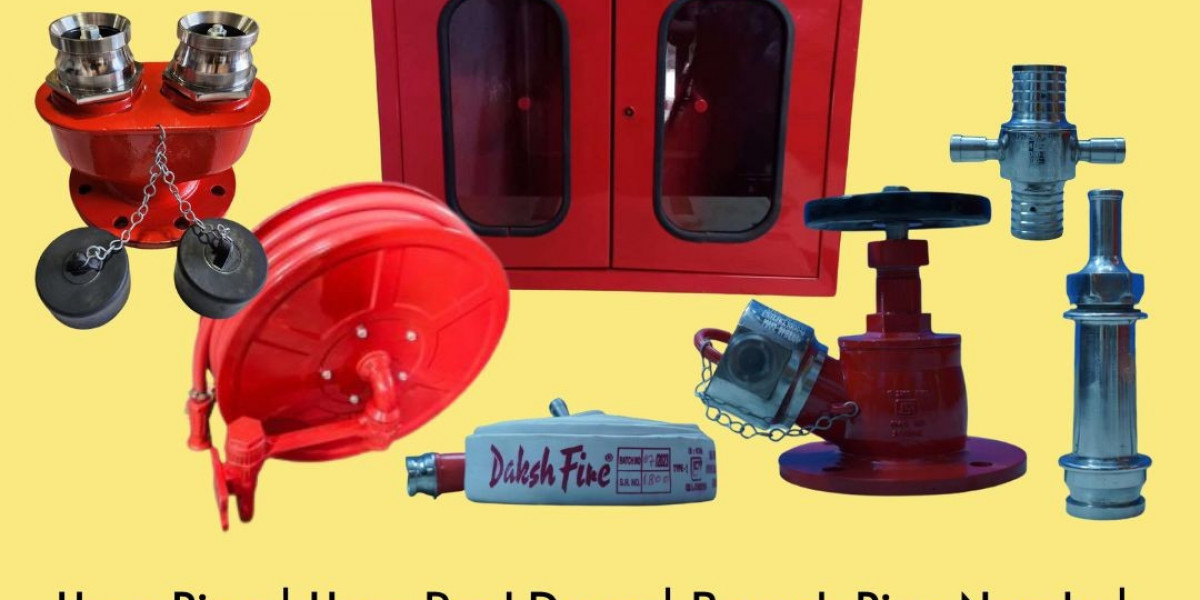Introduction
When it comes to large buildings and industrial spaces, a fire hydrant system is one of the most reliable and essential parts of overall fire protection. Whether it’s a residential complex, commercial property, warehouse, or high-rise building, having a well-designed hydrant system ensures that water is readily available to fight fires effectively.
But many people still wonder — what is a fire hydrant system and how does it actually work? In this guide, we’ll explain everything you need to know about the working principle, key components, and advantages of installing a fire hydrant system on your property.
What is a Fire Hydrant System?
A fire hydrant system is a network of pipes, pumps, and water storage tanks that provides a continuous supply of water for firefighting purposes. It’s a part of the building’s fire safety infrastructure, designed to control or extinguish fires at an early stage.
This system helps firefighters quickly connect their hoses to a nearby fire hydrant to access pressurized water during emergencies. It acts as the backbone of fire protection in large premises where portable extinguishers alone are not sufficient.
In simple terms, a hydrant system ensures that water is always available — at the right pressure and volume — to combat fires efficiently.
How Does a Fire Hydrant System Work?
The fire hydrant system works on a straightforward but highly effective principle — it delivers water from a dedicated source to any part of the premises through a network of pipes and hydrant points.
Here’s a step-by-step look at how it operates:
- Water Source:
The system is connected to an underground or overhead water tank that stores an adequate amount of water exclusively for firefighting. - Fire Pumps:
When a fire is detected or a hydrant valve is opened, the electric or diesel-driven fire pumps automatically start. These pumps pressurize the water and push it through the pipeline network. - Hydrant Points:
The pressurized water reaches various fire hydrant points installed throughout the building or premises. Firefighters connect hoses to these hydrants to direct water onto the fire. - Hoses and Nozzles:
Water travels through durable hoses and nozzles, allowing the firefighting team to control the water flow and direction.
This simple yet powerful setup ensures that a strong water stream is always available at multiple points, helping prevent the spread of fire until professional help arrives.
Key Components of a Fire Hydrant System
Every fire hydrant system is made up of several interconnected components that work together seamlessly. Below are the main parts you should know about:
1. Water Storage Tank
A large water tank stores the required volume of water for firefighting operations. Depending on the building type, it can be underground or overhead.
2. Fire Pump Room
This is the heart of the hydrant system, where all pumps, control panels, and valves are installed. Common pumps include the main electric pump, diesel pump (as a backup), and jockey pump (to maintain pressure).
3. Piping Network
A network of underground and overhead pipes distributes water to various hydrant points throughout the premises.
4. Fire Hydrant Valves
These are outlet points strategically installed outside or inside the building. Firefighters connect hoses to these fire hydrant valves to access pressurized water.
5. Hoses and Nozzles
Flexible hoses carry the water from the hydrant to the fire, and nozzles help control the pressure and direction of the water stream.
6. Landing Valves and Hose Reels
Landing valves are often found on each floor of high-rise buildings, providing easy access to water during a fire emergency. Hose reels allow quick deployment for immediate action.
Advantages of Installing a Fire Hydrant System
1. Rapid Response During Fire Emergencies
A well-installed fire hydrant system ensures an immediate water supply, allowing firefighters or trained personnel to act quickly before the fire spreads.
2. Reliable Water Pressure and Coverage
The system delivers high-pressure water to multiple points simultaneously, which is crucial for large buildings or industrial sites where fires can spread quickly.
3. Suitable for All Types of Properties
From residential complexes to commercial towers and warehouses, a hydrant system can be customized to meet any building’s fire safety needs.
4. Compliance with Fire Safety Regulations
Installing a fire hydrant system ensures that your property meets local fire department regulations and safety standards. It also enhances your building’s overall fire rating.
5. Low Maintenance and Long Lifespan
Once installed properly, the system requires minimal maintenance — periodic inspections and servicing keep it in perfect working condition for years.
Why Every Property Needs a Fire Hydrant System
No matter the size of your property, fire protection is a shared responsibility. Portable extinguishers are effective for small fires, but in larger or multi-floor buildings, a fire hydrant system is essential to control severe fires.
For residential complexes, it provides peace of mind to residents. In commercial and industrial settings, it ensures employee safety and protects valuable assets. In warehouses and high-rise structures, it prevents major losses by controlling fires before they escalate.
Conclusion
A fire hydrant system is not just another piece of equipment—it’s a life-saving investment that ensures water is always ready when it’s needed the most. Understanding what a fire hydrant system is, how it works, and its components helps you make informed decisions about fire safety in your property.
At Naman Fire Engineers, we specialize in designing, installing, and maintaining efficient fire hydrant systems for residential, commercial, and industrial spaces. Contact us today to discuss your fire safety needs and safeguard your property with a reliable hydrant system.







